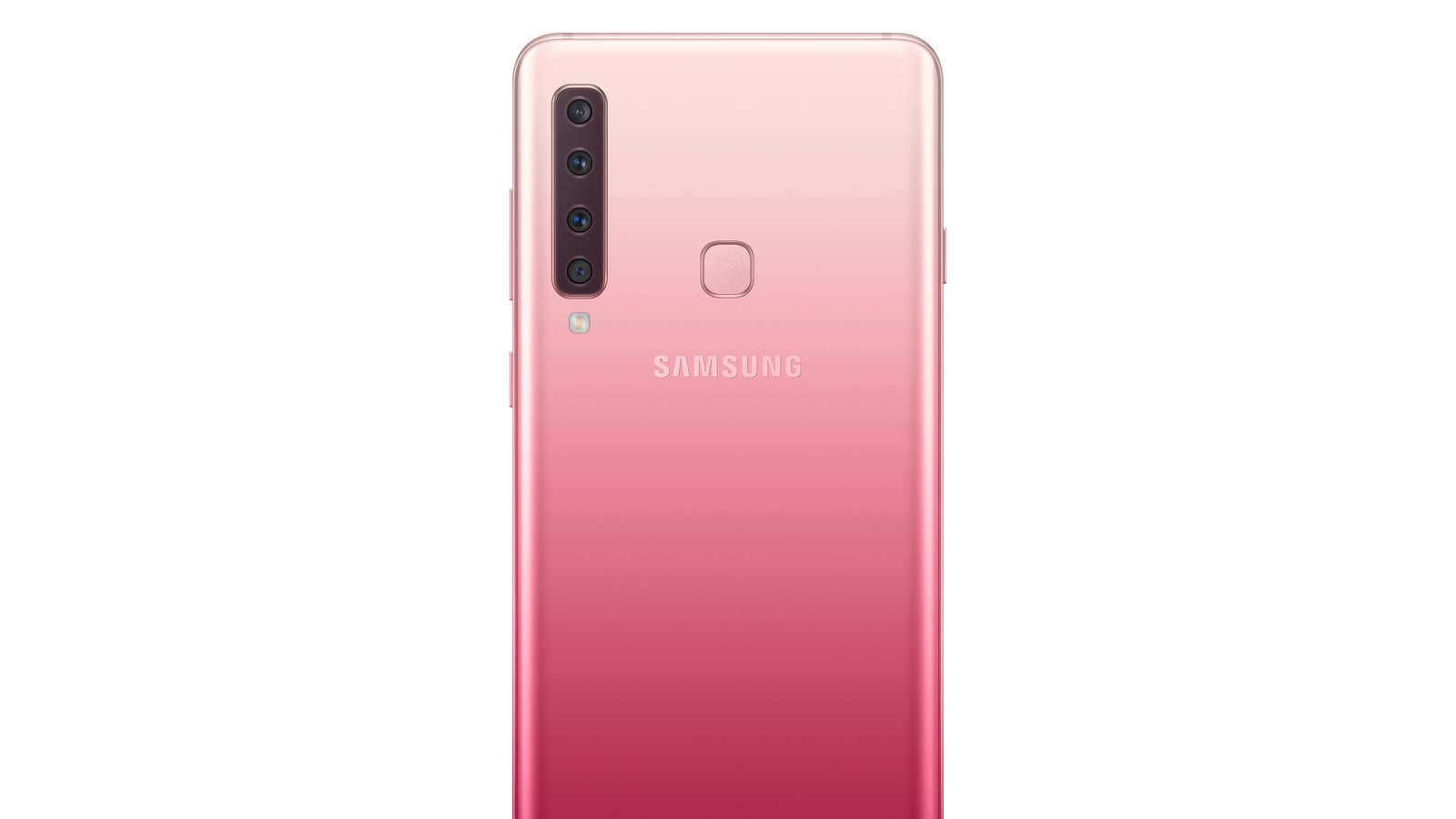Samsung has just gotten a leg up in the phone camera wars. It announced the new Galaxy A9 on Oct. 11, likely the first smartphone in the world to have four rear cameras.
Even though Huawei’s P20 Pro and the LG V40 ThinQ both have three rear cameras, and the latter has a total of five including two cameras on the front, Samsung’s A9 has for now bagged the title of most on the back. But despite this flashy new feature, the A9 isn’t even one of Samsung’s premium flagship models—those right now are the $1,000 Galaxy S9 and Note 9 phones.
While Samsung and Apple dominate the premium market, it’s more difficult to stand out as a mid-range phone like the £549 (roughly $727) A9, which will launch in the UK in November. Samsung’s sales have slowed down as lower-priced Chinese brands, such as Xiaomi, have gained a larger share of the mid-tier market, according to a study earlier this year by the market research firm Gartner. As The Verge points out, adding eye-catching features (like an abundance of cameras) makes mid-range handsets more appealing to a larger audience.
DJ Koh, the CEO of Samsung Electronics, previously told CNBC that the company was going to adopt this strategy. “In the past, I brought the new technology and differentiation to the flagship model and then moved to the mid-end,” Koh said. “But I have changed my strategy from this year to bring technology and differentiation points starting from the mid-end.”
The A9 is aimed at the “Instagram generation,” the Telegraph reports. Its four rear cameras include one main sensor, one telephoto sensor that offers optical zoom, one ultra-wide sensor, and a depth sensor for Samsung’s “Live Focus” portrait effect. The phone is also buying into an existing advertising battle over which smartphone can take the most amazing photo. In the premium market, huge billboards with images captioned, “shot on iPhone,” and recent Condé Nast magazine covers photographed using the Google Pixel 3, suggest that the selling power of a powerful phone camera isn’t going anywhere. But touting the power of a mid-range phone’s camera would be a new wrinkle in this strategy.
And Samsung’s camera crown may not last long, as Nokia might soon be making a move. Leaked images from September suggest that HMD Global, the Finnish company that licenses the Nokia name to produce phones, might be creating a handset with five rear lenses. It might be, as The Verge puts it, a “penta-lens” set-up. Much like the razor blade market, will there come a point where adding more cameras simply won’t make much of a difference to the photos we take?
